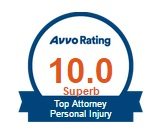Car accidents can be a complicated ordeal, especially when someone has been injured. Not only do you have to worry about getting and paying for medical treatment, you also have to determine who is actually at fault for the crash and the resulting injuries.
For car accidents without serious injury, Florida follows a no-fault system. This means that if you get into an accident with another person, your own insurance company will provide lost income and medical expense coverage regardless of who is at fault for the accident.
In fact, unless you have suffered a serious injury – permanent injury, disfigurement, or significant and permanent scarring – you can’t hold another driver liable for the accident. This means you’re not allowed to sue them.
What if you have suffered a serious injury, though?
In that case, you might have a lawsuit on your hands. Instead of falling under the no-fault system, your case will fall under comparative negligence law.
What Does Florida Mean by “Comparative Negligence”?
With some car accidents, it’s pretty easy to determine who was at fault. If a car runs a stop sign and slams into a car that was following all the traffic rules, the driver that ran the red light is should be held accountable.
In that example, the car that ran the red light is 100 percent to blame for the accident. So if the driver of the other car is seriously injured and brings a lawsuit that they win, he or she will receive the full amount of compensation they requested.
If, however, both drivers share some blame for an accident, the amount of compensation received will be reduced depending on the amount of blame. This is called pure comparative negligence.
Let’s see how it works using the same example from above and changing just a few of the details.
One car runs a stop sign and slams into another car. This time, though, instead of following all the traffic rules, the other car was actually driving above the speed limit. In this example, the driver who ran the stop sign is mostly to blame, whereas the other driver is partially to blame.
So if the driver who ran the red light is found 90 percent to blame and the driver who was speeding is found 10 percent to blame, compensation will be reduced by the percent of blame. For example, if the total compensation amount is $10,000, the driver who was hurt and brought the lawsuit will receive $9,000, or 90 percent of the compensation.
In short, under the comparative negligence law, you might be able to receive some compensation even if you were partially at fault for a car accident.
How Can I Show the Other Driver Was to Blame?
In order for comparative negligence to work, you need to prove that the other driver was negligent, which contributed to the accident. When you’re on Florida roads as a driver, passenger, or even a pedestrian, you’re responsible for using reasonable care to look out not just for your own safety, but also the safety of others.
While cars are supposed to yield to pedestrians, if a pedestrian suddenly jumps in front of a car causing an accident, the pedestrian could be partially to blame for the accident due to their negligence. Speeding, operating a defective vehicle, knowing a driver is drunk or sleepy, or interfering with the driver of a vehicle can all contribute to negligent conduct when discussing car accident liability.
For this reason, if you or a loved one has been seriously injured in a car accident, it’s important to contact a knowledgeable Florida car accident attorney who can help you determine exactly who is liable for your injuries and how much compensation you can expect.
About the Author:
Andrew Winston is a partner at the personal injury law firm of Winston Law. For over 20 years, he has successfully represented countless people in all kinds of personal injury cases, with a particular focus on child injury, legal malpractice, and premises liability. He has been recognized for excellence in the representation of injured clients by admission to the Million Dollar Advocates Forum, is AV Preeminent Rated by the Martindale-Hubbell Law Directory, enjoys a 10.0 rating by AVVO as a Top Personal Injury Attorney, has been selected as a Florida “SuperLawyer” from 2011-2017 – an honor reserved for the top 5% of lawyers in the state – and was voted to Florida Trend’s “Legal Elite” and as one of the Top 100 Lawyers in Florida and one of the Top 100 Lawyers in the Miami area for 2015, 2016, and 2017.
 9 Ways Fireworks Can Cause Injury to Floridians
9 Ways Fireworks Can Cause Injury to Floridians 

















